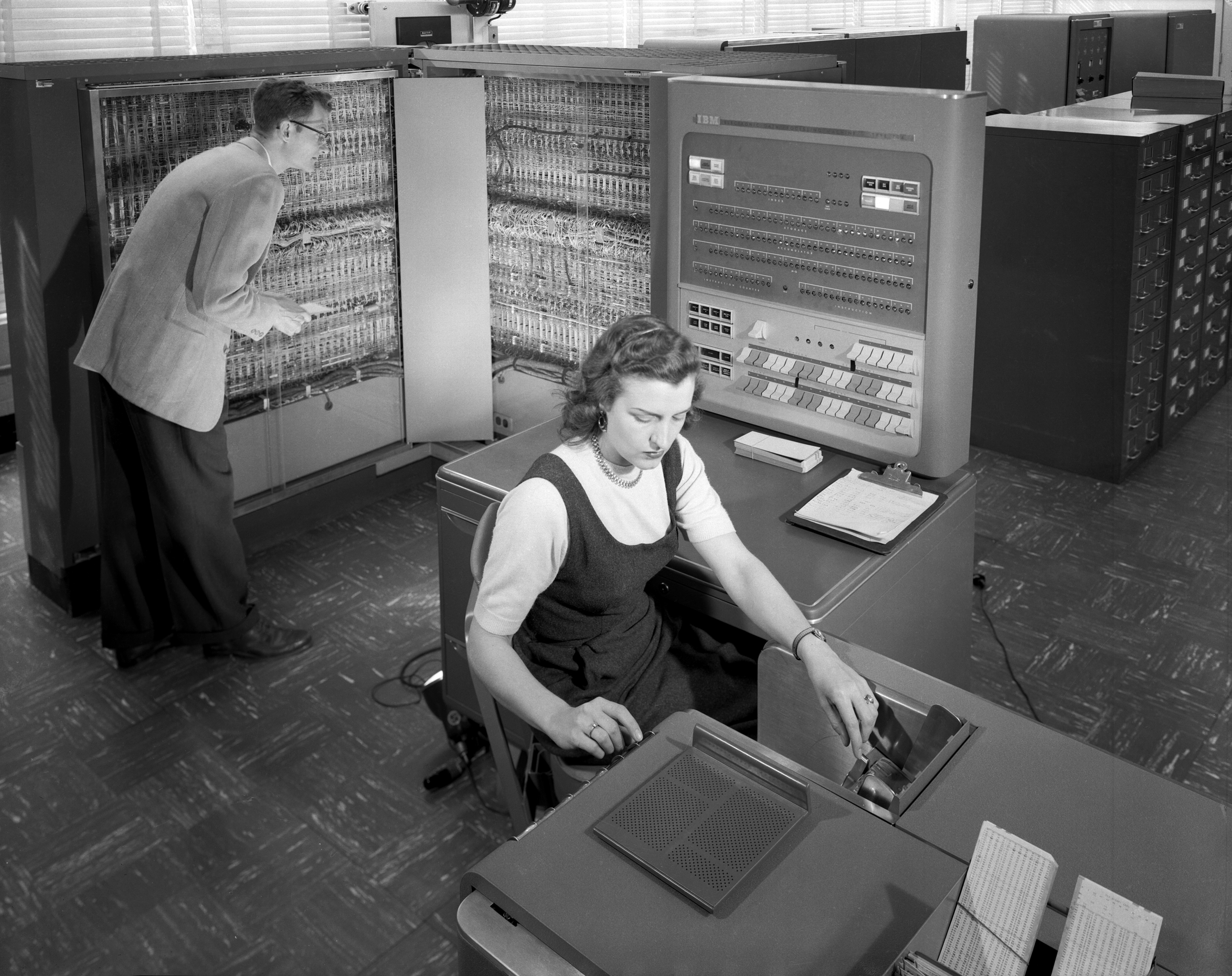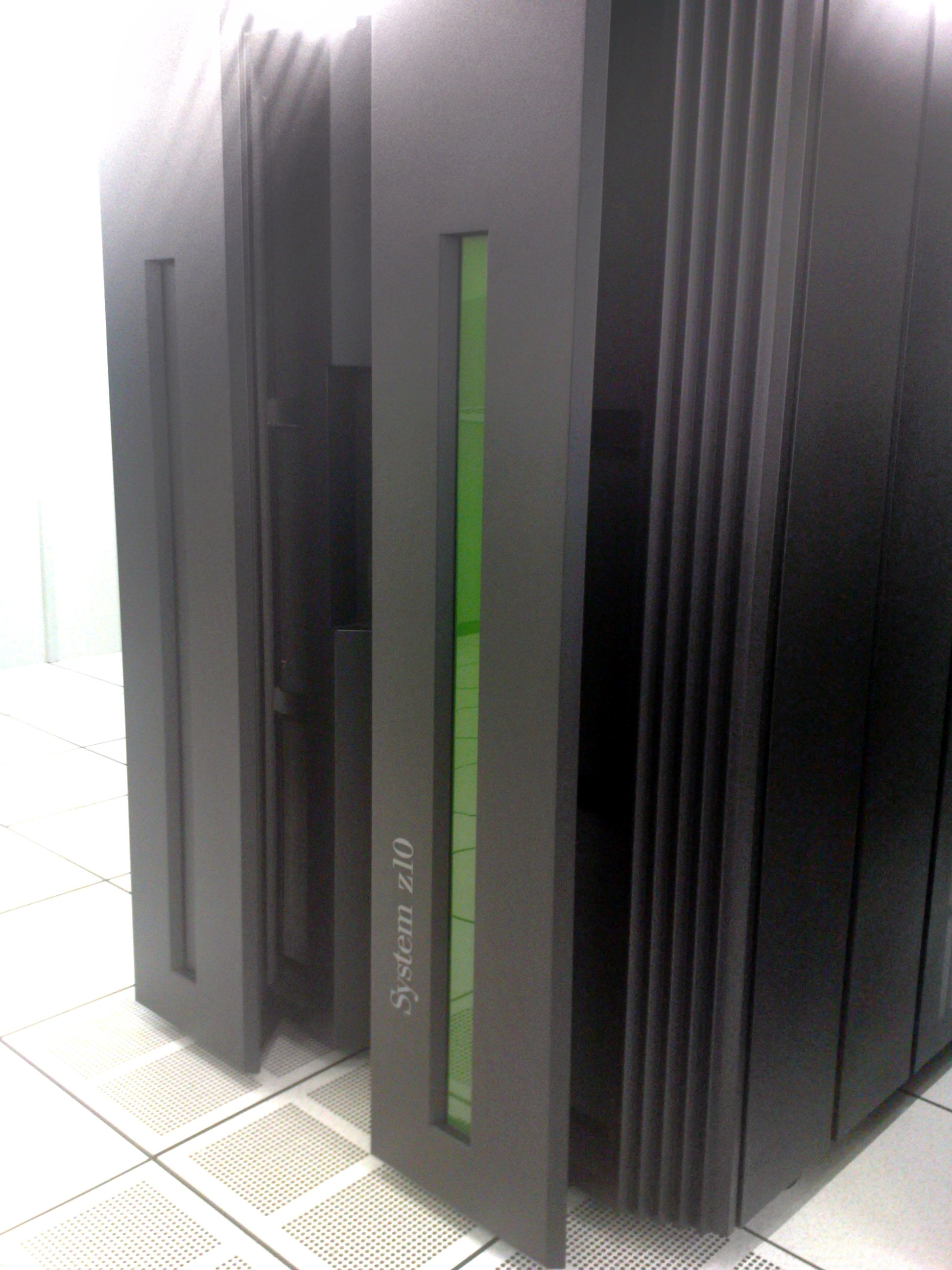|
Geneva ERS
GenevaERS is an enterprise reporting system that currently executes in the IBM mainframe z/OS environment. It is similar to MapReduce or Apache Spark but predates their development by a decade. It has been used as a data warehousing ETL, reporting, and application development platform. It was designed to support business systems using William McCarthy's theory of Resources, Events, Agents. GenevaERS was created by PricewaterhouseCoopers Consulting as part of their practice. (IBM acquired PwC Consulting in 2002.) IBM renamed GenevaERS IBM's Scalable Architecture for Financial Reporting (SAFR), marketing and licensing it through its IBM Global Services division, typically with customer-specific services. The product solves business intelligence problems for large operational databases, especially in insurance and financial industries. GenevaERS is also popular among SAP and other ERP system users, including manufacturing companies, with large databases and significant reporting ... [...More Info...] [...Related Items...] OR: [Wikipedia] [Google] [Baidu] |
IBM Mainframe
IBM mainframes are large computer systems produced by IBM since 1952. During the 1960s and 1970s, IBM dominated the large computer market. Current mainframe computers in IBM's line of business computers are developments of the basic design of the IBM System/360. First and second generation From 1952 into the late 1960s, IBM manufactured and marketed several large computer models, known as the IBM 700/7000 series. The first-generation 700s were based on vacuum tubes, while the later, second-generation 7000s used transistors. These machines established IBM's dominance in electronic data processing ("EDP"). IBM had two model categories: one (701, 704, 709, 7030, 7090, 7094, 7040, 7044) for engineering and scientific use, and one (702, 705, 705-II, 705-III, 7080, 7070, 7072, 7074, 7010) for commercial or data processing use. The two categories, scientific and commercial, generally used common peripherals but had completely different instruction sets, and there were incompatibili ... [...More Info...] [...Related Items...] OR: [Wikipedia] [Google] [Baidu] |
Linux Foundation
The Linux Foundation (LF) is a non-profit technology consortium founded in 2000 as a merger between Open Source Development Labs and the Free Standards Group to standardize Linux, support its growth, and promote its commercial adoption. Additionally, it hosts and promotes the collaborative development of open source software projects. It is a major force in promoting diversity and inclusion in both Linux and the wider open source software community. The foundation was launched in 2000, under the Open Source Development Labs (OSDL) and became the organization it is today when OSDL merged with the Free Standards Group (FSG). The Linux Foundation sponsors the work of Linux creator Linus Torvalds and lead maintainer Greg Kroah-Hartman. Furthermore, it is supported by members, such as AT&T, Cisco, Fujitsu, Google, Hitachi, Huawei, IBM, Intel, Meta, Microsoft, NEC, Oracle, Orange S.A., Qualcomm, Samsung, Tencent, and VMware, as well as developers from around the world. I ... [...More Info...] [...Related Items...] OR: [Wikipedia] [Google] [Baidu] |
VSAM
Virtual Storage Access Method (VSAM) is an IBM DASD file storage access method, first used in the OS/VS1, OS/VS2 Release 1 (SVS) and Release 2 (MVS) operating systems, later used throughout the Multiple Virtual Storage (MVS) architecture and now in z/OS. Originally a record-oriented filesystem, VSAM comprises four data set ''organizations'': key-sequenced (KSDS), relative record (RRDS), entry-sequenced (ESDS) and linear (LDS). The KSDS, RRDS and ESDS organizations contain records, while the LDS organization (added later to VSAM) simply contains a sequence of pages with no intrinsic record structure, for use as a memory-mapped file. Overview An IBM ''Redbook'' named "VSAM PRIMER" (especially when used with the "Virtual Storage Access Method (VSAM) Options for Advanced Applications" manual) explains the concepts needed to make use of VSAM. IBM uses the term ''data set'' in official documentation as a synonym of ''file'', and ''direct access storage device'' (''DASD'') because ... [...More Info...] [...Related Items...] OR: [Wikipedia] [Google] [Baidu] |
IBM Db2
Db2 is a family of data management products, including database servers, developed by IBM. It initially supported the relational model, but was extended to support object–relational features and non-relational structures like JSON and XML. The brand name was originally styled as DB/2, then DB2 until 2017 and finally changed to its present form. History Unlike other database vendors, IBM previously produced a platform-specific Db2 product for each of its major operating systems. However, in the 1990s IBM changed track and produced a Db2 common product, designed with a mostly common code base for L-U-W (Linux-Unix-Windows); DB2 for System z and DB2 for IBM i are different. As a result, they use different drivers. DB2 traces its roots back to the beginning of the 1970s when Edgar F. Codd, a researcher working for IBM, described the theory of relational databases, and in June 1970 published the model for data manipulation. In 1974, the IBM San Jose Research center dev ... [...More Info...] [...Related Items...] OR: [Wikipedia] [Google] [Baidu] |
ZIIP
In IBM System z9 and successor mainframes, the System z Integrated Information Processor (zIIP) is a special purpose processor. It was initially introduced to relieve the general mainframe central processors (CPs) of specific Db2 processing loads, but currently is used to offload other z/OS workloads as described below. The idea originated with previous special purpose processors, the zAAP, which offloads Java processing, and the IFL, which runs Linux and z/VM but not other IBM operating systems such as z/OS, DOS/VSE and TPF. A System z PU (processor unit) is "characterized" as one of these processor types, or as a CP (Central Processor), or SAP (System Assist Processor). These processors do not contain microcode or hardware features that accelerate their designated workloads. Instead, by relieving the general CP of particular workloads, they often lead to a higher workload throughput at reduced license fees. DB2 for z/OS V8 was the first application to exploit the zIIP, but now ... [...More Info...] [...Related Items...] OR: [Wikipedia] [Google] [Baidu] |
Batch Processing
Computerized batch processing is a method of running software programs called jobs in batches automatically. While users are required to submit the jobs, no other interaction by the user is required to process the batch. Batches may automatically be run at scheduled times as well as being run contingent on the availability of computer resources. History The term "batch processing" originates in the traditional classification of methods of production as job production (one-off production), batch production (production of a "batch" of multiple items at once, one stage at a time), and flow production (mass production, all stages in process at once). Early history Early computers were capable of running only one program at a time. Each user had sole control of the machine for a scheduled period of time. They would arrive at the computer with program and data, often on punched paper cards and magnetic or paper tape, and would load their program, run and debug it, and carry off thei ... [...More Info...] [...Related Items...] OR: [Wikipedia] [Google] [Baidu] |
IBM Z
IBM Z is a family name used by IBM for all of its z/Architecture mainframe computers. In July 2017, with another generation of products, the official family was changed to IBM Z from IBM z Systems; the IBM Z family now includes the newest model, the IBM z16, as well as the z15, the z14, and the z13 (released under the IBM z Systems/IBM System z names), the IBM zEnterprise models (in common use the zEC12 and z196), the IBM System z10 models (in common use the z10 EC), the IBM System z9 models (in common use the z9EC) and ''IBM eServer zSeries'' models (in common use refers only to the z900 and z990 generations of mainframe). Architecture The ''zSeries,'' ''zEnterprise,'' ''System z'' and ''IBM Z'' families were named for their availability – ''z'' stands for zero downtime. The systems are built with spare components capable of hot failovers to ensure continuous operations. The IBM Z family maintains full backward compatibility. In effect, current systems are the direc ... [...More Info...] [...Related Items...] OR: [Wikipedia] [Google] [Baidu] |
Open Mainframe Project
Open Mainframe Project is a Collaborative Project managed by the Linux Foundation to encourage the use of Linux-based operating systems and open source software on mainframe computers. The project was announced on August 17, 2015 and was driven by IBM, a major supplier of mainframe hardware, as well as 16 other founding members, that included SUSE, CA Technologies, BMC Software, Compuware as well as clients and partners such as RSM Partner, Vicom Infinity, L3C LLP and ADP, and academic institutions such as Marist College and University of Bedfordshire. Coincident with the announcement, IBM also announced a partnership with Canonical to make the Ubuntu operating system available for their high-end z Systems hardware. Development priorities for the project in 2016 include OpenJDK, Docker and Hyperledger. In February 2016 the Linux Foundation announced new members had joined the Open Mainframe Project: Hitachi Data Systems, Sine Nomine Associates, East Carolina University and Da ... [...More Info...] [...Related Items...] OR: [Wikipedia] [Google] [Baidu] |
SAP AG
Sap is a fluid transported in xylem cells (vessel elements or tracheids) or phloem sieve tube elements of a plant. These cells transport water and nutrients throughout the plant. Sap is distinct from latex, resin, or cell sap; it is a separate substance, separately produced, and with different components and functions. Insect honeydew is called sap, particularly when it falls from trees, but is only the remains of eaten sap and other plant parts. Types of sap Saps may be broadly divided into two types: xylem sap and phloem sap. Xylem sap Xylem sap (pronounced ) consists primarily of a watery solution of hormones, mineral elements and other nutrients. Transport of sap in xylem is characterized by movement from the roots toward the leaves. Over the past century, there has been some controversy regarding the mechanism of xylem sap transport; today, most plant scientists agree that the cohesion-tension theory best explains this process, but multiforce theories that ... [...More Info...] [...Related Items...] OR: [Wikipedia] [Google] [Baidu] |
Z/OS
z/OS is a 64-bit operating system for IBM z/Architecture mainframes, introduced by IBM in October 2000. It derives from and is the successor to OS/390, which in turn was preceded by a string of MVS versions.Starting with the earliest: * OS/VS2 Release 2 through Release 3.8 * MVS/System Extensions (MVS/SE) * MVS/System Product (MVS/SP) Version 1 * MVS/System Product Version 2 (MVS/Extended Architecture, MVS/XA) * MVS/System Product Version 3 (MVS/Enterprise Systems Architecture, MVS/ESA) * MVS/ESA SP Version 4 * MVS/ESA SP Version 5 Like OS/390, z/OS combines a number of formerly separate, related products, some of which are still optional. z/OS has the attributes of modern operating systems, but also retains much of the older functionality originated in the 1960s and still in regular use—z/OS is designed for backward compatibility. Major characteristics z/OS supportsSome, e.g., TSO/E, are bundled with z/OS, others, e.g.,CICS, are separately priced. stable mainframe ... [...More Info...] [...Related Items...] OR: [Wikipedia] [Google] [Baidu] |
Business Intelligence
Business intelligence (BI) comprises the strategies and technologies used by enterprises for the data analysis and management of business information. Common functions of business intelligence technologies include reporting, online analytical processing, analytics, dashboard development, data mining, process mining, complex event processing, business performance management, benchmarking, text mining, predictive analytics, and prescriptive analytics. BI tools can handle large amounts of structured and sometimes unstructured data to help identify, develop, and otherwise create new strategic business opportunities. They aim to allow for the easy interpretation of these big data. Identifying new opportunities and implementing an effective strategy based on insights can provide businesses with a competitive market advantage and long-term stability, and help them take strategic decisions. Business intelligence can be used by enterprises to support a wide range of business ... [...More Info...] [...Related Items...] OR: [Wikipedia] [Google] [Baidu] |





